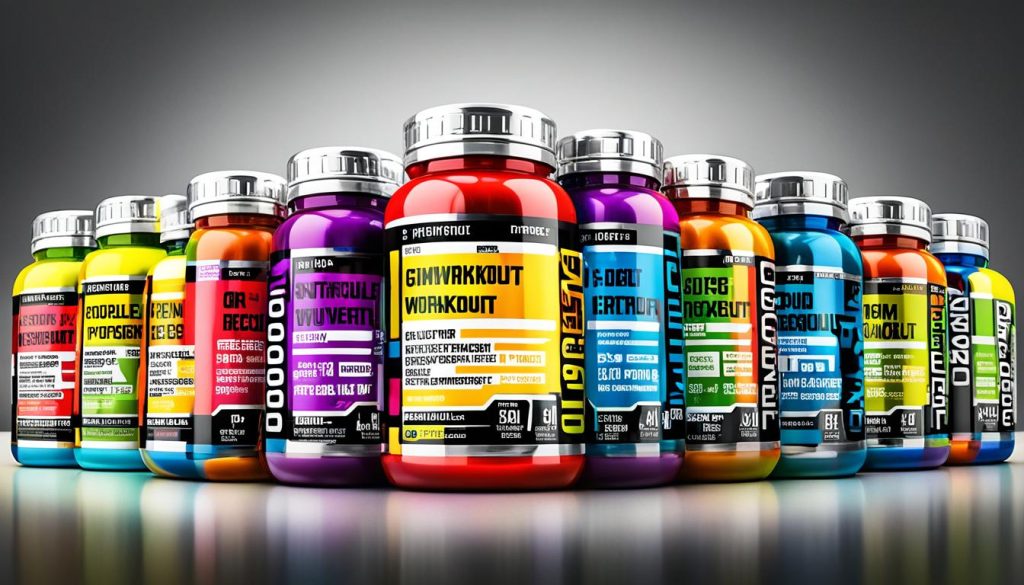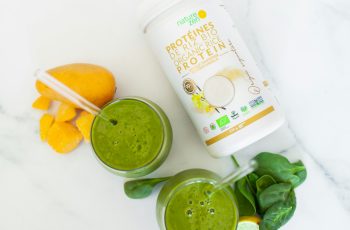Ad Blocker Detected
Our website is made possible by displaying online advertisements to our visitors. Please consider supporting us by disabling your ad blocker.
Welcome to our ultimate guide on muscle hypertrophy – the key to maximizing your gains and achieving your desired muscle growth. Whether you’re an experienced lifter or just starting your fitness journey, understanding the science and principles behind muscle development is crucial for reaching your goals.
In this comprehensive guide, we’ll cover everything you need to know about hypertrophy training, including effective exercises, nutrition strategies, and recovery techniques. By implementing these essential strategies, you’ll be on your way to building muscle size, increasing muscle mass, and achieving hypertrophic adaptations.
Key Takeaways:
- Understand the process of muscle hypertrophy and how it leads to muscle growth and development.
- Learn about the factors that contribute to hypertrophy, including mechanical tension, muscle damage, metabolic stress, and muscle protein synthesis.
- Discover the benefits of increasing hypertrophy, such as improved muscle gain, strength, power, metabolism, and injury prevention.
- Explore effective training techniques, including resistance training, progressive overload, compound exercises, and variation.
- Understand the importance of nutrition for hypertrophy and how to eat for muscle growth and recovery.
What Is Hypertrophy?
Hypertrophy refers to the process of muscle growth and development. When you engage in resistance training, such as weightlifting, your muscles experience microscopic damage. This damage triggers a repair and growth response, leading to the enlargement of muscle fibers and an increase in muscle size and strength.
Resistance training acts as a stimulus that challenges your muscles, causing them to adapt and grow. It involves performing exercises that target specific muscle groups, applying tension to the muscles and causing microscopic tears in the muscle fibers. These tears induce a cascade of events within your body, including inflammation and the release of hormones and growth factors that stimulate muscle repair and growth.
Muscle hypertrophy occurs in two ways: myofibrillar hypertrophy and sarcoplasmic hypertrophy. Myofibrillar hypertrophy refers to an increase in the size and number of myofibrils within muscle fibers, resulting in greater muscle strength. Sarcoplasmic hypertrophy, on the other hand, involves an increase in the fluid-filled compartments of the muscle, leading to a larger muscle size and appearance.
Resistance training creates the ideal conditions for muscle hypertrophy by inducing muscle damage, which triggers an adaptive response. The body repairs the damaged muscle fibers and makes them stronger and larger to withstand similar stress in the future.
During the repair process, the body increases muscle protein synthesis, a necessary step for building new proteins and restoring damaged fibers. This increase in protein synthesis results in muscle hypertrophy, enhancing the size and functionality of the muscles involved in the training stimulus.

The Science Behind Hypertrophy
To understand the science behind hypertrophy, it’s important to delve into the cellular mechanisms that drive muscle growth. When your muscles experience damage during resistance training, the body activates satellite cells, which are located on the surface of muscle fibers.
These satellite cells play a crucial role in muscle repair and growth. They fuse with existing muscle fibers, donating their nuclei to repair damaged muscle cells and contribute to the synthesis of new proteins. This process of satellite cell activation and fusion leads to the hypertrophic adaptation of muscle fibers over time.
Furthermore, the production and secretion of hormones, such as testosterone and growth hormone, increase during exercise and contribute to muscle hypertrophy. These hormones play a vital role in regulating protein synthesis, activating satellite cells, and promoting overall muscle development.
The Role of Nutrition
Achieving optimal muscle hypertrophy requires more than just exercise. Nutrition plays a crucial role in providing the necessary building blocks for muscle repair and growth.
In particular, protein is a key macronutrient for muscle development. Protein provides the essential amino acids that serve as the building blocks for muscle tissue repair and synthesis. To support muscle hypertrophy, it is recommended to consume adequate amounts of high-quality protein sources with each meal, such as lean meats, poultry, fish, eggs, dairy products, and plant-based protein sources like legumes and tofu.
It is also important to ensure a sufficient overall calorie intake to provide the energy required for intense resistance training and support muscle growth. Consuming a balanced diet that includes a variety of nutrient-dense foods, including carbohydrates and healthy fats, is crucial for providing the necessary energy and nutrients for muscle hypertrophy.
| Nutrition Tips for Hypertrophy |
|---|
| Eat a balanced diet with a variety of nutrient-dense foods. |
| Consume adequate protein to support muscle repair and growth. |
| Ensure sufficient calorie intake to fuel your workouts and support muscle development. |
| Stay hydrated to support overall performance and recovery. |
| Consider timing your meals and incorporating pre- and post-workout nutrition strategies. |
Remember, achieving hypertrophy requires a combination of consistent resistance training, proper nutrition, and adequate rest and recovery. By understanding the science behind hypertrophy and implementing the right strategies, you can maximize your muscle growth and reach your fitness goals.
What Causes Hypertrophy?
Hypertrophy, the process of muscle growth, is influenced by several key factors. By understanding these factors, you can optimize your training and nutrition to maximize muscle gains.
Mechanical Tension
One of the primary drivers of hypertrophy is mechanical tension. When you engage in resistance training, such as lifting weights or performing resistance exercises, you create tension in your muscles. This tension places stress on the muscle fibers, signaling your body to adapt and grow stronger.
Muscle Damage
Another important factor in hypertrophy is muscle damage. During intense workouts, small tears occur in your muscle fibers. These tears stimulate the body’s repair process, resulting in the growth and strengthening of muscle tissue. It is important to note that the level of muscle damage should be appropriate and progressive for optimal results.
Metabolic Stress
Metabolic stress, often referred to as the “burn” felt during high-repetition or high-intensity workouts, also contributes to hypertrophy. Metabolic stress occurs when muscles are continuously working, depleting energy stores and metabolites. This stress triggers various chemical responses in the body that support muscle growth.
Muscle Protein Synthesis
Muscle protein synthesis is the process by which your body repairs and builds new muscle proteins. Mechanical tension, muscle damage, and metabolic stress stimulate muscle protein synthesis, leading to muscle growth and adaptation. It is essential to provide your body with adequate protein and nutrients for optimal muscle protein synthesis.
Calories
Lastly, caloric intake plays a crucial role in supporting muscle growth. Consuming enough calories ensures that your body has the energy and nutrients necessary for muscle repair and growth. Aim for a balanced diet that provides an appropriate calorie surplus to support your hypertrophy goals.
Understanding and addressing these factors – mechanical tension, muscle damage, metabolic stress, muscle protein synthesis, and calories – can help you create a training and nutrition plan that optimizes hypertrophy and maximizes your muscle gains.

Benefits of Increasing Hypertrophy
Increasing hypertrophy can have a profound impact on your overall fitness and well-being. By focusing on building more muscle, you can unlock a multitude of benefits that will enhance your strength, power, metabolism, and injury prevention.
- Muscle Gain: When you prioritize hypertrophy, you’ll notice significant muscle gain. Building more muscle mass contributes to a more defined and muscular physique. You’ll not only look stronger, but you’ll also have the physical ability to back it up.
- Strength and Power: Increased muscle mass directly translates to greater strength and power. The more muscle you have, the more force you can generate, making it easier to excel in sports, weightlifting, and other physical activities.
- Metabolism Boost: Building muscle plays a crucial role in boosting your metabolism. Muscles are metabolically active, meaning they require more calories to maintain. By increasing muscle mass through hypertrophy, you’ll raise your metabolic rate and burn more calories throughout the day, helping to prevent weight gain.
- Injury Prevention: Developing stronger muscles can significantly reduce the risk of injuries. When your muscles are well-trained and balanced, they provide better support and stability for your joints. This can help prevent common injuries, such as sprains, strains, and muscle imbalances, allowing you to sustain an active and injury-free lifestyle.
To summarize, increasing hypertrophy not only enhances your physical appearance but also improves your overall functional fitness. By prioritizing muscle gain, strength, power, metabolism, and injury prevention, you can unlock your body’s full potential and achieve optimal health and performance.

How to Train for Hypertrophy
To maximize hypertrophy and achieve significant muscle growth, incorporating resistance training into your workout routine is crucial. By following key principles and incorporating specific exercises, you can stimulate muscle development and achieve your desired physique.
Resistance Training
Resistance training involves performing exercises that challenge your muscles against a resistance, such as weights or resistance bands. This type of training is essential for promoting muscle hypertrophy and overall strength development. By consistently engaging in resistance training, you can progressively enhance your physique and achieve remarkable results.
Progressive Overload
One of the fundamental principles of hypertrophy training is progressive overload. This principle involves gradually increasing the weight, intensity, or volume of your workouts over time. By constantly pushing your muscles to adapt to higher levels of stress, you can trigger muscle growth and achieve significant hypertrophic adaptations.
Compound Exercises
Compound exercises are multi-joint movements that engage multiple muscle groups simultaneously. Some examples of compound exercises include squats, deadlifts, bench presses, and rows. These exercises are highly effective for stimulating muscle hypertrophy as they recruit a large number of muscle fibers and require significant effort to perform.
Variation and Rep Ranges
Varying your exercises and rep ranges is essential for keeping your muscles constantly challenged and promoting continuous growth. By incorporating different exercises that target the same muscle groups and altering the number of repetitions performed, you can prevent plateaus and ensure optimal progress. Aim to include a combination of low, moderate, and high rep ranges in your workouts to effectively stimulate muscle hypertrophy.
Remember, the key to achieving hypertrophy is to constantly push your muscles beyond their comfort zone. Embrace the challenge, stay consistent, and be patient. Results will come with time and dedication.
These training strategies, including resistance training, progressive overload, compound exercises, and variation in rep ranges, form the foundation for maximizing hypertrophy. Use these principles as guidelines in your training program to achieve exceptional muscle growth and transform your physique.
| Resistance Training Tips: | Benefits of Resistance Training: |
|---|---|
|
|
How to Eat for Hypertrophy
Nutrition plays a vital role in supporting muscle hypertrophy. To maximize your gains, it’s important to fuel your body with the right nutrients. Here are some key principles to follow when it comes to eating for hypertrophy:
1. Prioritize Protein Intake
Protein is the building block of muscle tissue and essential for muscle repair and growth. Aim to consume an adequate amount of protein with each meal. Good sources of protein include lean meats, poultry, fish, eggs, dairy products, legumes, and plant-based sources like tofu and tempeh.
2. Meet Your Caloric Needs
Calories provide the energy necessary for your workouts and support muscle growth. It’s important to consume enough calories to meet your daily energy requirements. Calculate your total daily energy expenditure (TDEE) and adjust your calorie intake accordingly. Focus on nutrient-dense foods to fuel your body effectively.
3. Emphasize Nutrient-Dense Foods
Along with protein and calories, your overall nutrition is crucial for optimal muscle hypertrophy. Include a variety of nutrient-dense foods in your diet, such as fruits, vegetables, whole grains, and healthy fats. These foods provide essential vitamins, minerals, and antioxidants that support overall health and muscle recovery.
“Nutrition is the foundation of muscle growth. By fueling your body with the right nutrients and nourishing your muscles, you set the stage for optimal hypertrophy.”
4. Optimize Muscle Recovery
Muscle recovery is a critical component of hypertrophy. Adequate nutrition plays a significant role in facilitating muscle repair and growth. Prioritize post-workout nutrition by consuming a combination of protein and carbohydrates to replenish glycogen stores and support muscle recovery. Consider options like a protein shake or a balanced meal within the recovery window.
5. Hydrate Properly
Proper hydration is essential for muscle function and recovery. Aim to drink enough water throughout the day to stay hydrated. During intense workouts, you may need to increase your fluid intake to replace sweat losses. Listen to your body and drink when you feel thirsty.
6. Consider Timing and Supplements
While food should always be your main source of nutrients, strategic supplementation can support your muscle hypertrophy goals. Consider consuming a protein shake or supplement around your workouts to aid in muscle recovery. Consult with a healthcare professional or registered dietitian to determine if supplements are appropriate for you.
| Protein Sources | Caloric Foods | Nutrient-Dense Foods |
|---|---|---|
| Lean meats (chicken, turkey, lean beef) | Quinoa | Fruits (berries, bananas) |
| Poultry (chicken, turkey) | Avocado | Vegetables (spinach, broccoli) |
| Fish (salmon, tuna) | Whole grains (oats, brown rice) | Legumes (beans, lentils) |
| Eggs | Nuts and seeds | Healthy fats (olive oil, nuts) |
| Dairy products (milk, yogurt) | Peanut butter |

Best Supplements for Hypertrophy
While not essential for hypertrophy, certain supplements can support muscle growth and recovery. Incorporating muscle-building supplements into your regimen can be a beneficial addition to your fitness journey. Here are some key supplements to consider:
1. Protein Powder
Protein powder is a popular choice for individuals looking to increase their protein intake conveniently. It provides a quick and efficient way to meet your daily protein requirements, which is crucial for muscle repair and growth. Opt for high-quality protein powders derived from sources such as whey, casein, or plant-based proteins.
2. Creatine
Creatine is a widely studied and effective supplement for enhancing muscle strength and size. It increases the production of ATP, the body’s primary energy source during high-intensity exercise, resulting in improved workout performance and increased muscle mass. Creatine monohydrate is the most researched and recommended form of creatine.
3. Branched-Chain Amino Acids (BCAAs)
BCAAs are essential amino acids that play a crucial role in muscle recovery. They can promote protein synthesis, reduce muscle protein breakdown, and help reduce exercise-induced fatigue. BCAAs are particularly beneficial during intense training sessions or periods of calorie restriction.
4. Beta-Alanine
Beta-alanine is an amino acid that can improve endurance performance during high-intensity exercises. By increasing muscle carnosine levels, beta-alanine helps delay muscular fatigue and reduces the buildup of lactic acid. This supplement can be particularly useful for those engaged in repeated bouts of intense exercise, such as weightlifting.
It’s important to note that supplements should be used in conjunction with a balanced diet and exercise regimen. They are meant to complement your efforts, not replace them. Additionally, consult with a healthcare professional or certified trainer before incorporating any new supplements into your routine to ensure they align with your specific needs and goals.
By incorporating targeted muscle-building supplements into your fitness routine, you can enhance your efforts and support your muscle growth and recovery goals.

Note: The image above is for illustrative purposes only and does not endorse any specific brand or product.
The Importance of Recovery
Rest and recovery are crucial for optimizing muscle hypertrophy—the process of muscle growth and development. Giving your muscles adequate time to rest and repair is essential for achieving optimal growth and maximizing your gains. In addition to a well-designed training program and proper nutrition, incorporating strategic recovery practices into your routine is key.
One of the most important aspects of recovery is sleep. Aim for 7-9 hours of quality sleep each night to support muscle recovery and repair. During sleep, your body releases growth hormone, which plays a vital role in muscle growth and repair. Quality sleep also helps regulate hormone levels, reduces the risk of injury, and enhances overall performance.
It’s not just about sleep, though. Incorporating dedicated rest days into your training schedule is equally important. These rest days allow your muscles to recover fully and repair any microscopic damage caused by intense training sessions. While it may be tempting to push yourself to the limit every day, remember that muscle growth occurs during periods of recovery.
“Rest is not a waste of time; it is an investment in your progress.”
During recovery days, engaging in light activities such as stretching, foam rolling, or low-impact cardio can improve blood flow and help flush out metabolic waste products. These activities can also aid in reducing muscle soreness and tightness, promoting a faster recovery and better overall muscle function.
To summarize, here are a few key points to remember:
- Get 7-9 hours of quality sleep each night to support muscle recovery and repair.
- Incorporate rest days into your training schedule to allow your muscles to recover fully.
- Engage in light activities during recovery days to improve blood flow and reduce muscle soreness.
By prioritizing rest and recovery alongside your training efforts, you provide your muscles with the necessary time and resources to repair and grow. Remember, muscle growth is not just about working hard; it’s also about smart recovery practices.

Importance of Recovery – Key Takeaways
| Benefits of Recovery | Recovery Practices |
|---|---|
|
|
Training Variables for Hypertrophy
When it comes to maximizing muscle growth, understanding and manipulating various training variables can make a significant difference in your results. By strategically adjusting certain factors, you can optimize hypertrophy and unlock your muscle-building potential.
Volume: Pushing Your Limits
Volume refers to the total amount of work performed during your training session, including the number of sets, reps, and exercises. To promote hypertrophy, gradually increase your training volume over time. This can be achieved by either adding more sets or reps to your workouts or incorporating additional exercises. By consistently challenging your muscles with sufficient volume, you stimulate them to adapt and grow stronger.
Intensity: Training with Purpose
Intensity relates to the level of effort and resistance you apply during your workouts. To stimulate hypertrophy, strive for a moderate to high intensity, lifting weights that are challenging but manageable with proper form. This intensity should create enough stress on your muscles to trigger growth. Always strive to push your limits and progressively increase the weight you lift as you gain strength and form mastery.
Frequency: Finding the Sweet Spot
Frequency refers to how often you train a particular muscle or muscle group. While individual needs may vary, aiming for 2-4 training sessions per week per muscle group is generally effective for hypertrophy. Allow enough time between sessions for adequate recovery, but avoid excessive rest periods that may hinder progress. Finding the right balance of frequency ensures that you provide enough stimulus for growth without overtraining.
Tempo: Controlling the Pace
Tempo refers to the speed at which you perform each repetition of an exercise. Varying the tempo during your lifts can further challenge your muscles and promote hypertrophy. Incorporate slow eccentric (lowering) and explosive concentric (lifting) phases into your training. For example, taking 2-3 seconds to lower the weight and exploding with controlled power during the lift. This controlled tempo increases the time under tension, maximizing muscle fiber recruitment and growth.
Time Under Tension (TUT): Sustained Muscle Stress
Time under tension refers to the duration that your muscles are actively engaged during each set. To promote hypertrophy, focus on keeping the tension on your muscles for a prolonged period. Slowing down your reps, using pauses at the peak contraction point, and minimizing rest between exercises can increase TUT. By subjecting your muscles to sustained stress, you encourage greater muscle fiber recruitment and promote optimal growth.
Consider incorporating these training variables into your workouts to optimize hypertrophy. Experiment with different combinations and techniques, and listen to your body to find what works best for you. Remember, consistency and progressive overload are key. Consistently challenging your muscles and gradually increasing the demands you place on them will lead to noticeable gains in muscle size and strength.
Myths and Misconceptions About Hypertrophy
There are several myths and misconceptions surrounding muscle hypertrophy. Let’s dispel them and separate fact from fiction:
- Muscle Soreness: Contrary to popular belief, muscle soreness is not a reliable indicator of muscle growth. While you may experience muscle soreness after a challenging workout, it is primarily due to the accumulation of lactic acid and micro-tears in the muscle fibers. It does not directly correlate to muscle hypertrophy.
- Muscle Pumps: The satisfying sensation of muscle pumps during a workout is not directly linked to muscle hypertrophy. Muscle pumps occur when blood rushes into the muscles, causing them to temporarily swell. While muscle pumps can make you feel pumped up and give the appearance of larger muscles, they are not a reliable measure of long-term muscle growth.
- Muscle Isolation: Focusing solely on muscle isolation exercises, such as bicep curls or leg extensions, may not be the most effective approach for overall muscle growth. While these exercises have their place in a well-rounded training program, compound exercises that target multiple muscle groups simultaneously (such as squats and deadlifts) are generally more efficient for stimulating hypertrophy. Compound exercises allow for greater muscle activation, increased overall strength, and potentiate the release of anabolic hormones.
It’s important to separate fact from fiction when it comes to understanding hypertrophy. By debunking these myths, you can focus on proven strategies and principles to achieve optimal muscle growth.
Factors That Influence Hypertrophy
Several factors can influence your potential for hypertrophy, the process of muscle growth and development. Understanding these factors can help you tailor your training and nutrition strategies to optimize your muscle gains.
1. Genetics
Genetics play a significant role in determining how your muscles respond to training stimuli. Some individuals may naturally have a higher potential for muscle growth, while others may have to work harder to achieve similar results. However, it’s important to remember that genetics are not the sole determinant of hypertrophy. With proper training and nutrition, you can still make significant progress regardless of your genetic predisposition.
2. Age
The aging process can impact muscle growth. As you get older, your body may experience a slower rate of hypertrophy. This is due to various factors, such as decreased hormone levels, reduced recovery capacity, and changes in protein metabolism. However, regular resistance training and a balanced diet can still promote muscle growth and help mitigate the effects of aging.
3. Sex and Hormone Levels
Sex differences, including hormone levels, can influence muscle growth. Testosterone, for example, plays a crucial role in promoting muscle hypertrophy. Men naturally have higher testosterone levels compared to women, which can contribute to their ability to build more muscle mass. However, women can still achieve significant hypertrophy through proper training and nutrition. It’s important to note that hormone levels can vary greatly among individuals, regardless of their sex.
4. Training Experience
Your training experience and consistency also play a vital role in achieving hypertrophy. Those who have been consistently training for a longer period may have already built a solid foundation of muscle mass, making it more challenging to continue seeing significant gains. However, by implementing progressive overload and continuously challenging your muscles with new exercises and techniques, you can still stimulate hypertrophy and experience continued growth.
In conclusion, understanding the various factors that influence hypertrophy can help you strategize and tailor your training and nutrition programs for optimal muscle growth. While genetics, age, sex, hormone levels, and training experience can have an impact, it’s important to focus on consistency, progressive overload, and proper nutrition to unlock your full potential for muscle hypertrophy.
Conclusion
Achieving your desired muscle hypertrophy requires an understanding of the complex process and careful implementation of effective training and nutritional strategies. By consistently applying the principles of resistance training, progressive overload, and varied exercise selection, you can stimulate muscle growth and maximize your gains. Remember to consult with a healthcare professional or certified trainer to ensure safe and effective practices tailored to your specific needs.
Rest and recovery are equally crucial in your muscle hypertrophy journey. Give your muscles the time they need to repair and grow by incorporating rest days into your training schedule and prioritizing quality sleep. Remember, muscle growth occurs during recovery, so don’t overlook this vital aspect of the process.
In your pursuit of muscle hypertrophy, consistency is key. Stay dedicated to your training and nutritional regimen, and don’t be discouraged by setbacks or plateaus along the way. With perseverance and a balanced approach, you can achieve your muscle hypertrophy goals and unlock your full potential.
FAQ
What is muscle hypertrophy?
Muscle hypertrophy refers to the process of muscle growth and development. It occurs when resistance training, such as weightlifting, causes microscopic damage to the muscles, triggering a repair and growth response that leads to an increase in muscle size and strength.
What causes hypertrophy?
Hypertrophy is caused by a combination of factors, including mechanical tension, muscle damage, and metabolic stress. When you lift weights or perform resistance exercises, you create mechanical tension in your muscles. This tension, along with the resulting muscle damage and metabolic stress, stimulates muscle protein synthesis, which repairs and grows muscle fibers. Adequate calorie intake is also essential for supporting muscle growth.
What are the benefits of increasing hypertrophy?
Increasing hypertrophy has several benefits. It helps you achieve a more muscular and defined physique, improves strength and power, boosts metabolism, prevents weight gain, and enhances overall physical function and injury prevention.
How should I train for hypertrophy?
To train for hypertrophy, incorporate resistance training into your routine with a focus on progressive overload. This means gradually increasing the weight or intensity of your exercises. Aim for compound exercises that target multiple muscle groups, vary your exercises and rep ranges, and challenge your muscles consistently.
How should I eat for hypertrophy?
Proper nutrition is crucial for muscle hypertrophy. Consume an adequate amount of protein to support muscle repair and growth. Ensure you’re getting enough calories to provide energy for your workouts and muscle growth. Focus on a well-rounded diet with nutrient-dense foods.
What are the best supplements for hypertrophy?
While not essential, certain supplements can support muscle growth and recovery. Protein powder increases protein intake, creatine enhances muscle strength and size, branched-chain amino acids aid in muscle recovery, and beta-alanine improves workout endurance. Remember to use supplements in conjunction with a balanced diet and exercise regimen.
Why is rest and recovery important for hypertrophy?
Rest and recovery are essential for optimal muscle growth. Muscles need time to rest and repair to grow properly. Aim for 7-9 hours of quality sleep per night and incorporate rest days into your training schedule.
What training variables influence hypertrophy?
Several variables influence hypertrophy, including volume (total amount of work performed), intensity (weight or resistance), frequency (training sessions per week), tempo (lifting speed), and time under tension. Varying these variables challenges your muscles and promotes growth.
What are common myths and misconceptions about hypertrophy?
Contrary to popular belief, muscle soreness is not directly linked to muscle growth. Muscle pumps, while satisfying, are not indicative of hypertrophy. Focusing solely on muscle isolation exercises may not be the most effective approach for overall muscle growth.
What factors influence hypertrophy?
Several factors influence an individual’s potential for hypertrophy. Genetics determine how easily your muscles respond to training. Age can affect the rate of muscle growth, with older individuals experiencing a slower rate. Sex differences, such as hormone levels, can also influence muscle growth. Training experience and consistency are important for achieving hypertrophy.
Can the Muscle Hypertrophy Guide be Adapted for Seniors Looking to Lose Weight?
Yes, the Muscle Hypertrophy Guide can be adapted for seniors looking to lose weight. By following the principles of progressive overload and proper nutrition, seniors can increase muscle mass and metabolism to achieve the ultimate weight loss seniors desire. It’s never too late to prioritize strength training and healthy eating habits for effective weight loss.


